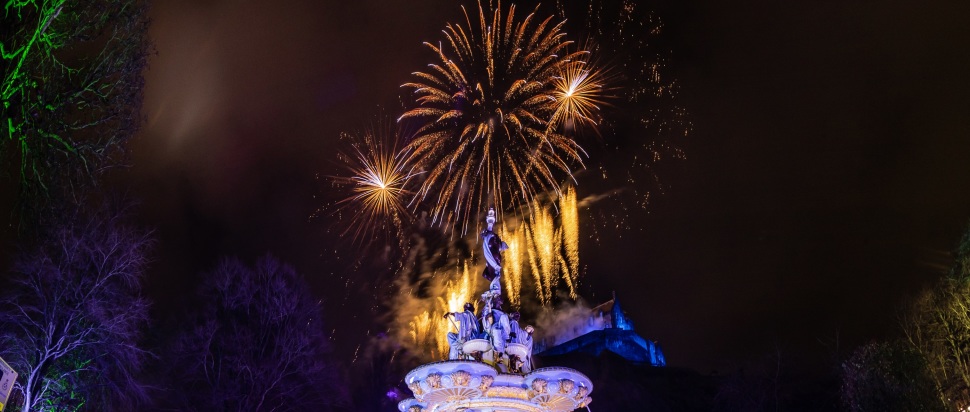Hogmanay: What is it and what are the traditions?
Hogmanay is one of Scotland's biggest and proudest celebrations, with people travelling from around the world to experience the party in person. We take a look at what it is, and what you should do to ring in 2025
So what exactly is Hogmanay? In short, it’s the Scots word for the last day of the old year and what we call New Year’s Eve in this part of the world. Any information on its etymological makeup is conflicting, with many vying for a slice of Hogmanay’s origin story, but the important thing to know is that Hogmanay has been a long-running tradition in Scotland since the start of the 17th century, so we’ve been celebrating it for more than 400 years, at least.
Hogmanay, of course, is more than just a word to describe the celebration of the last day of the year – it comes wrapped in years-old traditions, many of which are still followed today, although, as with anything, some have evolved and shapeshifted over the years. As it currently stands, there are five important traditions that many follow in order to shut the door on the past year, and open the door to a new, hopefully more prosperous one.
Fire Rituals
At pagan winter festivals, fire rituals are used to ward off evil spirits, and over the years, fire has become synonymous with Hogmanay, from the fireworks that light up the skies above Edinburgh Castle as the clock strikes midnight, to the huge Fireball Ceremony that takes place in Stonehaven, or Perthshire’s Comrie Flambeaux. Signalling the start of Edinburgh’s Hogmanay, you’ll also find a Torchlight Procession starting in The Meadows on 29 December.
Singing Auld Lang Syne
‘Should auld acquaintance be forgot / And never brought to mind? / Should auld acquaintance be forgot? / In the days of auld lang syne’. Auld Lang Syne is a poem by Robert Burns set to a traditional Scots folk melody, and it’s long been a tradition to sing this after midnight, hand-in-hand with those around you, whether they be friends, family, or complete strangers. Despite celebrating the new year ahead, Auld Lang Syne is a song about remembrance.
First Footing
The first person to enter your home on New Year’s Day is known as a first footer, bringing with them a gift to bring good luck and fortune for the new year ahead. Originally it was preferred that the guest would be a tall, dark and handsome man (insert eye roll here), as they would bring the most luck, with women or those with fair hair best avoided. Traditionally a gift of coal was given to warm the house, but these days whisky is best.
Food and Drink
There’s lots of food and drink wrapped up in Hogmanay celebrations, from having a dram of whisky at the stroke of midnight, to eating and sharing sweet treats like fruit cake, shortbread or black bun – a type of Scottish fruit cake wrapped in pastry. On New Year’s Day, after an often heavy night, it’s become tradition to soak all of that up with a steak pie and whatever sides you want: potatoes, chips, veg – take your pick.
Loony Dook
Look to any Scottish town or city close to the sea, and on New Year’s Day you’ll find a brave few taking to the cold January waters for a bracing ‘dook’, the Scots word for taking a dip. As well as helping stave off a hangover, it’s another out with the old, in with the new tradition, albeit a wet and very very cold one. If you're keen to give it a go, be sure to check local forums for organised events and stay safe by reading the guide to open water swimming on the RNLI website: rnli.org
